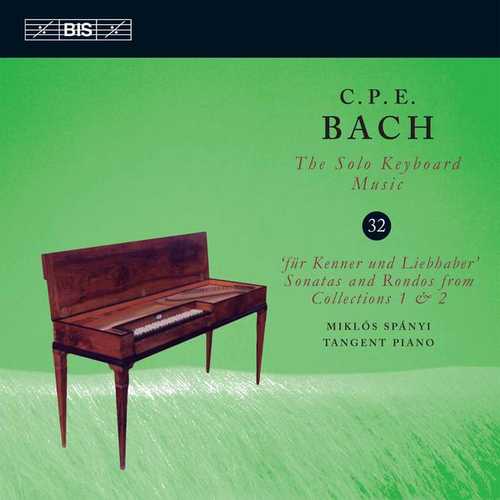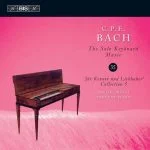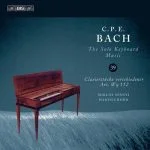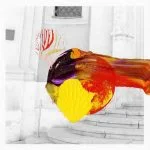
Composer: Carl Philipp Emanuel Bach
Performer: Miklós Spányi
Format: FLAC (tracks)
Label: BIS
Release: 2017
Size: 1.68 GB
Recovery: +3%
Scan: yes
Keyboard Sonata in C major, Wq. 55 / 1 (H244)
01. I. Prestissimo
02. II. Andante
03. III. Allegretto
04. Rondo in C major, Wq. 56 / 1 (H260)
Sonata in A major, Wq. 55 / 4 (H186)
05. I. Allegro assai
06. II. Poco adagio
07. III. Allegro
08. Rondo in D major, Wq. 56 / 3 (H261)
Keyboard Sonata in G major, Wq. 55 / 6 (H187)
09. I. Allegreto moderato
10. II. Andante
11. III. Allegro di molto
12. Rondo in A minor, Wq. 56 / 5 (H262)
Recorded: July 2015
Recording Venue: Keizerszaal, Sint-Truiden
Even before the publication of the first collection of Clavier-Sonaten für Kenner und Liebhaber in 1779, Carl Philipp Emanuel Bach began composing works intended for a follow-up. This time he expanded the original concept, however, and included not just three sonatas, but also three rondos ‘for the fortepiano’. In his treatment of the rondo-form, Bach was – as always – a mould-breaker and in the ‘Kenner und Liebhaber’ rondos the refrain melody inevitably creeps into the episodes, which in turn wander through distant tonalities. The phrase structure is frequently asymmetrical, and the borders between sections are often blurred, making this rather schematic form into something of a roller-coaster ride. Taking note of Bach’s instructions regarding the choice of instrument, Miklós Spányi performs them on a tangent piano, an early form of the piano. The strings of the tangent piano are struck by small wooden slips (‘tangents’) and the basic sound is reminiscent of the harpsichord, but this can be modified in a number of ways. Featuring the clavichord, the previous disc in this highly regarded series presented six sonatas from Bach’s first two collections. On the present disc, Spányi combines the rondos with Sonatas 4 and 6 from the first collection, as their more extrovert character makes them suited for the tangent piano. He has also recorded Sonata No. 1 of that collection for a second time, giving followers of the series an opportunity to compare the effects that result from using the different instruments.



